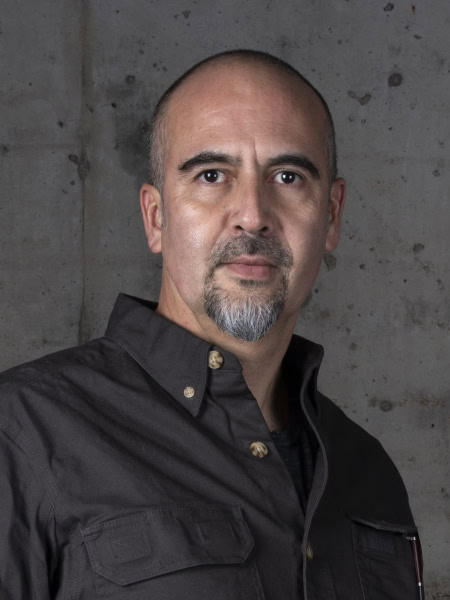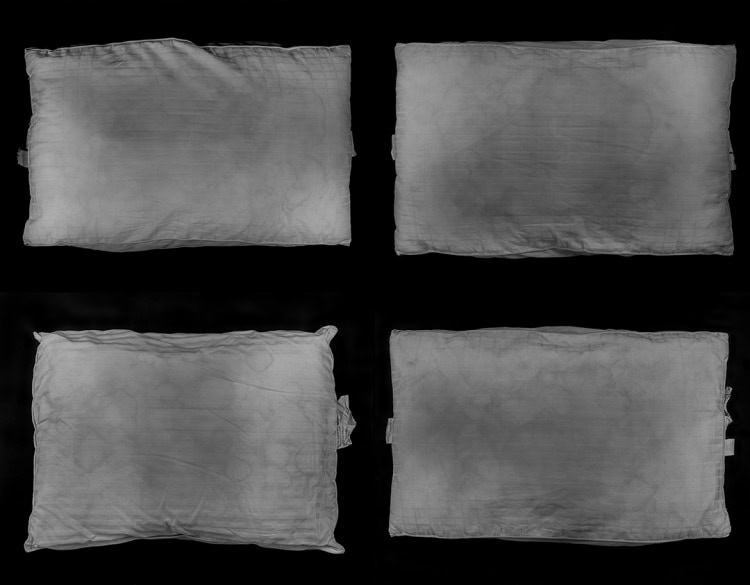Xavier Tavera was born in 1971 in Mexico City, first picked up a camera at 13, and came to the U.S. in 1996 to do industrial photography for a company in Houston. His position was supposed to be temporary, but his employers liked his photos so much they hired him permanently as they moved their headquarters to St. Paul.
At the time, he enrolled at the Minneapolis College of Art and Design, but the company went bankrupt in 1998 and left him without the resources to finish his degree until 2014. In the interim, Tavera (whose first name is pronounced Hah-vee-air) worked a factory job and continued to pursue photography in his spare time. He became quite successful, best known for his nuanced portraits of members of the Latino community, and first exhibited at the Minneapolis Institute of Arts in 2001. Focusing more broadly on issues related to immigrant culture, his works have been shown in galleries and museums all over the world in every year since.
Beginning Oct. 24 and running until Dec. 3, Tavera will make his first appearance at the College of Saint Benedict with “Where Dreams Remained” at the Benedicta Arts Center. It is collection of more than a dozen photographs of all sizes that are a reflection on where he lives in South Minneapolis, not far from the intersection where George Floyd was killed two years ago.
“This body of work is very new – it all came about this summer,” said Tavera, who achieved such notoriety that by 2012 he was asked to teach at Augsburg. He later taught at Metro State, the University of Minnesota – where he earned a master’s in fine art in 2017 and has been an assistant professor of art and art history at Carleton since 2020.
“The tension has been such that when we go to sleep, we try to relax, and we try to dream,” Tavera said. “But we’re always aware of any little noise that is outside, me and my wife. That has repercussions.
“With this show, I started with imagery of pillows. Where I’m coming from is, if I imagine what can be a vessel for that information in our heads, maybe they can be a recipient for those dreams and how we extract them if we have very little capacity to retain what we dream.”
He altered the contrast of his photos to make the detail of the pillowcases – including stains from saliva and tears – more apparent.
“Maybe our dreams and nightmares can also be contained in there,” he said.
Other photos, all taken this year, are of spent bullets he has collected from his neighborhood. Some have entered the houses of his friends. Still other images are of bullet holes in vehicles, some of which he saw damaged firsthand. He has balanced those with landscape photos of the same location in different circumstances. For example, there are pictures of a rocky reef in Lake Superior, shown during the spring and also in winter, when a crust of ice and icicles covers its surface. Another shows a field of wildflowers and tall grasses, contrasted with an image of the same ground on fire.
“That represents the dichotomy of the dreams and the nightmares on something tangible,” Tavera said. “Some can be pleasant to see, and others can be rougher.”
His equipment ranges from a smartphone, a medium format digital camera and a 4×5 large-format film camera to another that builds images in the same manner as a 3D printer, allowing for them to be scaled extremely large.
“The purpose of that is to show that something as utilitarian as a bullet can also be very appealing because of its color and shape,” said Tavera, who will appear at an artist’s reception from 5-7 p.m. Oct. 27 at the BAC gallery. “I’m trying to talk about violence without showing you violence. I also want people to think of the issues around race and poverty and violence. It’s a complex conversation. It’s not just a bullet that came out of a barrel and ended up in a house that makes everyone feel unsafe. I don’t want to simplify the problem. There is a lack of resources for people – in economics, health, education – that should be addressed. As a person of color, more police does not mean we’re going to be safer. We’re not addressing mental health or poverty. All of that conversation needs to happen together.
“This is happening not only in Minneapolis but in the world at large. We live in a hyper-violent time.”


Latino photographer Xavier Tavera uses a collection of daily objects to help imagine stories through domestic artifacts and disruptions. A resident of South Minneapolis, he produced high-definition photos of items like pillowcases that constitute part of the exhibition of “Where Dreams Remained.”
